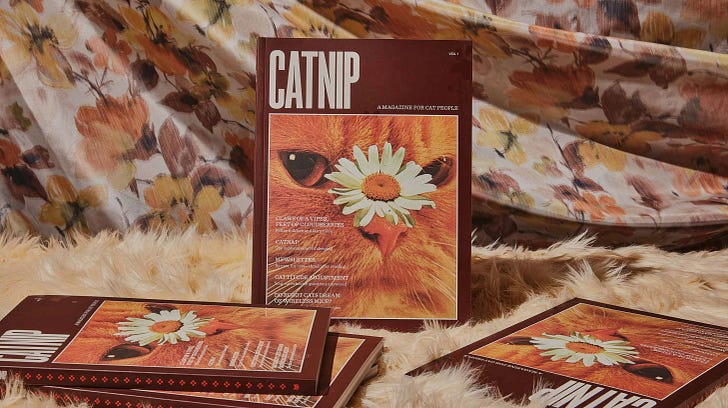Print is making a comeback
“As much as we can curate our own algorithms and train them, we're still … leaving out so much interesting stuff,” Broccoli Magazine founder Anja Charbonneau says.
Embedded is your essential guide to what’s good on the internet, written by Kate Lindsay and edited by Nick Catucci.
Pouring one out for Oh Comely, my favorite indie magazine from college, which didn’t make it past 2021. — Kate

The only magazine that arrives in my mailbox with any regularity is Artforum, thanks to a subscription belonging to the previous resident in my apartment. But growing up I was a voracious grocery-store-check-out magazine consumer, throwing issues of Cosmopolitan and Teen Vogue into my mom’s cart so I could read my horoscope and fill out the quizzes with friends. As I grew up, media moved online. Now, having fully digested print, digital media is eating itself, and physical magazines are beginning to look like an answer to some of the problems that online publishers created.
As weed became legalized in places like Oregon, where Anja Charbonneau is based, she became convinced that the media about cannabis was not representative of all of its users. In 2017, she founded Broccoli as a standalone magazine.
“We provided a space to have fun, to show that weed can be interesting and beautiful, and break the stigma of the lazy stoner,” she tells me over Zoom. Her company, which still regularly publishes Broccoli, has expanded with an art book, Snail World, published in collaboration with artists Aleia Murawski and Sam Copeland; their second, single-issue magazine, Mushroom People, which applies the Broccoli approach to to the world of fungi; fun side projects, including a seashell card deck and an essay collection on poisonous and psychoactive plants and fungi; and their latest magazine, Catnip, which was published on October 2.
Flipping through Catnip is a great reminder of the things missing from digital media. The cat horoscopes and cat-collage photo essays thrive outside the ecosystem of clicks. There’s also the reading experience itself: The physical magazine, all 216 pages of it, is filled with details like embossed paw prints and fake rips in the pages that make it look like your own cats may have gotten to it first.
“Knowing what we know now, I do think there will be a second issue at some point,” Charbonneau says. “We'll let it have a nice big amount of time to breathe before we get them again with more cats.”
In this interview for paid subscribers, Charbonneau and I talk about the logistics of running a print business, the relationship between magazines and social media, and why it’s digital media’s turn to be threatened by print.
We’re living in a digital-first media landscape. How did you find yourself in print publishing?
Keep reading with a 7-day free trial
Subscribe to Embedded to keep reading this post and get 7 days of free access to the full post archives.



